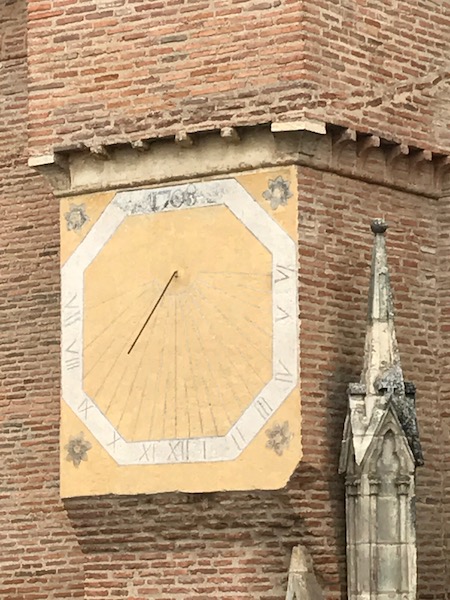Our Blog - Rieux-Volvestre, France
Since we are playing golf during the week, that leaves our weekends free to see the sights. We have been trying to do little day-trips .... Places within an hour or 2 of Toulouse. Today, we headed about an hour South of Toulouse to the Medieval town of Rieux-Volvestre. At one point, it was part of "The most beautiful villages in France" but lost that in the early 2000's as it ended up with more than 2,000 people (I guess that is the limit of a village). Since 2016, it is part of "The most beautiful detours of France" which is a group of small tourist towns that are outside of the main roads (hence the "detours" part of the name). The town dates back to the 1200's and in 1560, was the site of the trial of Arnaud du Tilh, in the Martin Guerre case (this was the basis for the movie Sommersby with Richard Gere and Jodie Foster, although changed to be set in the Civil War). In care you don't know of the case, a man (Martin Guerre) gets married and about 10 years later, leaves town after being accused of stealing grain. The wife lives alone, since at that time, the law did not allow her to remarry as her husband was not dead. About 5 years later, a man arrives claiming to be Martin Guerre, and he looks enough like Martin and knows enough about Martin's life, that he convinces most of the villagers, as well as the family and wife, that he is actually Martin Guerre. They live together for 3 more years and have 2 more children (1 of the 2 survives) and he claims the inheritance of the father. His wife's new father (who had married her widowed mother) became suspicious that Martin was not really Martin, and became even more convinced when a soldier came through town claiming that he was a fraud because the "real" Martin had lost a leg in the war. He was accused of being an imposter but his wife stood behind him and he was acquitted. However, she eventually agreed and he was tried again, in 1560 in Rieux. He was convicted and sentenced to death. He appealed and there was another trial, during which the "real" Martin Guerre appeared, complete with a wooden leg. He again was convicted and sentenced to death. He eventually confessed: he had learned about Guerre's life after two men had confused him with Guerre; he had then decided to take Guerre's place, with two conspirators helping him with the details.
Many people have a hard time believing that the wife would *NOT* really know that this person was not really her husband, especially after being together for almost 10 years and only being apart for 5 years. A Princeton history professor published a book about the case, and in this book, she argued that most likely, the wife had went along with the fraud because within society at that time, being an "abandoned" wife was not a good thing, and as long as she was treated well, it was better to actually "have" a husband than not.
Our first stop was the Tourist office, which is housed in a Seminary dating from the 15th and 16th centuries. In addition to the tourist office, it houses two museums, one of them being the Musée Lapidaire , which contains stone blocks and capitals that are remains from some of the history and heritage of the town. The capitals come from the cloisters of the two convents that existed here. The Franciscans settled in 1272, with the Dominicans arriving shortly after in 1275. One of the buildings that you will see later is the former dormitories and kitchens of the XVIth-XVIIIth century convents. At the time of the French Revolution, the convents were basically destroyed and their parts resold as building materials.




The other museum within the building is the museum of Papogay, which is a tradition in town. It is basically archery, but a specific type, which involves shooting a wooden parrot from a tall perch. Nowadays, there are 3 different heights so that kids can also take part. Adults shoot to a height of 45 meters, teens at 25 meters, and kids (7-12) shoot to 14 meters. The museum had a nice little display for this.



Each year, on the first Sunday of May, the Rivois (the people who live here) preserve this tradition, which dates back to medieval times, during a festival. The museum had several posters from prior years, which are all pretty cute, as well as pictures that go back to the festival in 1952.





After the parade through the village, about a hundred archers shoot their arrows at a parrot made of wood and iron, which is perched on a mast. The mayor always shoots the first arrow, then the rest of the archers start. The one who makes the bird fall is declared the King of Papogay.
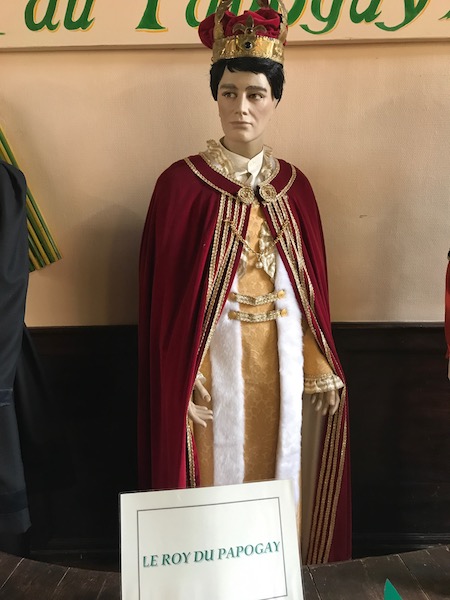


This is the program from the festival from 1923!
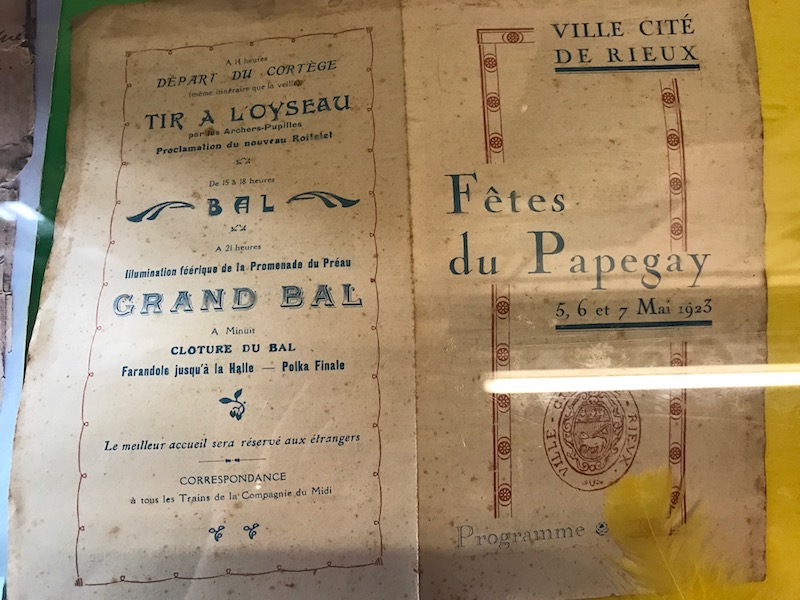
This is one of the best preserved and unique houses in the village. It dates back to the 15th century! There are several half-timbered houses in the town, but this one is very unique because the facade uses two different types of patterns: both a diamond pattern on the middle floor and a herringbone pattern on the top floor. The ground floor had stalls that could be used for stores or workshops. We grabbed these pictures early-on, and then later we made our way back and took a tour of the inside (which you'll see later in the blog). You can also see the stained glass windows (well, in these you can only tell that they have the veins in the panes of glass) .. I got some nice pictures of them from the inside later as well.







Not quite medieval ... but this is actually the dog which "lives" in the timbered house! We got a minute and petted him. We got to play with him a bit more later when we visited the house.

Around it are other very old buildings as well, within the old medieval town.



Across from the house is Saint-Mary's Cathedral. It is built at a bend off the Arize river and it (interestingly enough) was part of the defenses of the town. It is built in the meridional style, with very thick walls (up to 3 meters), as part of the defensive wall. On the side with the river, there are still slits in the walls where you could shoot arrows out of, if needed, to defend off anyone attacking the town. It was built in the 14th century on the site of the 11th century Chapel of St. Mary of the Aygas. The entrance is actually from that original church. The bell tower dates back to the 14th century ... well ... the base of it dates to the 14th century. The last three floors were completed in the 17th century and replicate the bell tower of the Convent of the Jacobins in Toulouse.


























Pont (bridge) Lajous was built in 1683 and renovated in 1785. It crosses the Arize River and was a link between the town and a feudal castle which used to be just on the other side of the bridge. Up until the 19th century, when it was demolished, there was a city gate at the entrance to the bridge with a monument to Louis XIVth.



These were actually nice ... the Tourist office has a little "walking tour" (French, English, and Spanish) and each of the sites (as well as a couple directional signs) are in these really nice blue tiles, which are done by an Algerian artist named Sylvian Meschia who now lives in Rieux-Volvestre.

Where the feudal castle used to be is now a cemetery, and as in almost every village, town, and city ... there is a monument to those from the area who died in the various wars. It is interesting to see these for a couple reasons. One is that you can see how devastating WWI was in France (vs WWII) ... the names below the main section are from 1914-1918 (MANY names), and the ones up on the sides are from WWII (something like 6 names). It also seems that almost every town has one of these, regardless of how small the town is. While in the US, we have large memorials to war dead, we don't have (or at least I don't think we have) them in every town which lists those who died who were from that individual town.

This is the building that I mentioned earlier. It dates from the 16th century and was part of the Jacobins convent, containing the kitchen and dormitories. The Jacobins/Dominicans had a presence in Rieux from 1272 until the Revolution.


On the other side of town is the Auriac bridge, also on the same river. In the middle of the bridge is the Chapel of Notre-Dame de Bonne Garde, which is more of an oratory than an actual chapel. It supposedly was built to protect the town against Huguenots and flooding. Inside are lovely frescoes, done by a Toulousain painter, which show a knight and a bishop putting the town under the protection of Notre Dame du Pont (Our Lady of the Bridge). Mind you ... it didn't really do its job against flooding, since the flood of 1875 caused damage to one end of the bridge and several buildings. It has a really nice house on the edge of the river with a cute little turret!








Speaking of the flood, you can see in the first picture, the level of the water on the 23rd of June in 1875, during the "great flood of France". Then we went back to try to give you a view of how high the water really was.


La Tourasse is a stately tower which dates back to the 13th century and was originally owned by the Marquefave family. The town bought it in 1517 and turned it into a meeting place and then the town hall. During the Revolution, the ground floor was turned into a jail, and was used again as a jail in the 19th century to hold deserters from the Napoleonic wars. It was then turned into a theater until being shut down in 1963. It is open every year during a theater festival the beginning of August.



La Halle is where, in olden times, the town market was here, and dates back to the 15th century. We've seen several of these in various small towns.

Across from the Hall is a house with sculpted faces on the facade, from the 17th century. They depict Venus, Jupiter, Mercury (easy to see with the winged hat), Poseidon, Saturn, and Bacchus (you can't see Bacchus as he was behind the foliage).





This is the gate of the Bishop's palace, which has a Moorish inspiration in the architecture. Above the gateway, which has the year 1696, are two places where the coats of arms of bishops from the 14th and 15th centuries were, but they were removed during the French Revolution. On either side of the gate, you can see arrow slits that were converted for firing muskets from by making a round area on the bottom of the slit.







As we finished out loop, we ended up back at the old half-timber house. The people who own the house (who we later found out, we think, live near us in Toulouse) had put a sign out that we could visit the interior of the house and the garden for 5 euros. We decided to go ahead with this, and we are actually glad that we did. The house was packed with "stuff" ... lots and lots of stuff. Most of them dated from the timeframe of the house, although there were also some odd things like copies of the terra cotta warriors from China. The heavy wood beams were visible everywhere, and the fireplaces in the various rooms were especially interesting (and beautiful). They also had various pieces of furniture from the 16th and 17th centuries and a really old Singer sewing machine (sorry, that picture is a bit blurry).




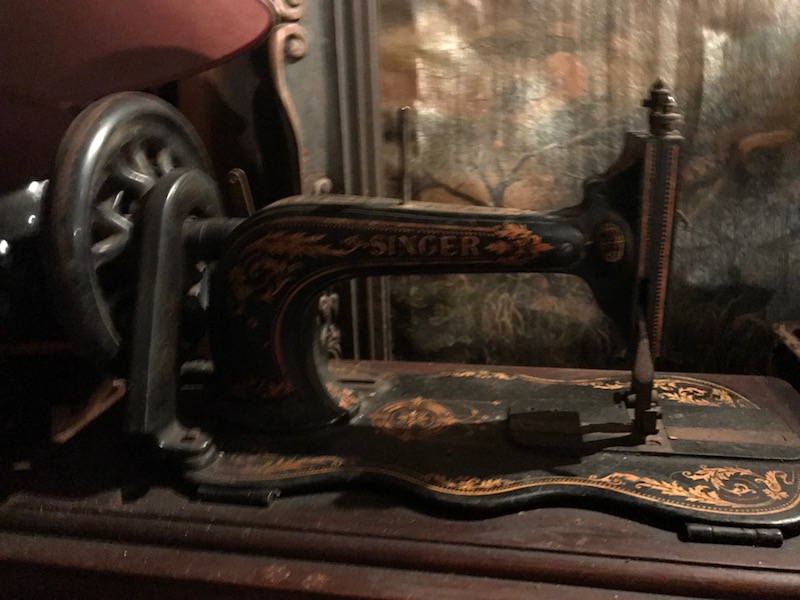
From the first floor, we headed out into this garden, which was a bit overgrown for my liking. It did, however, give you great views of the exterior of the house. A few interesting things was that the circular staircase was actually on the exterior of the house itself.



The owner was nice enough to take a picture of us in the garden, with the house and the bell tower of the Church in the background.

And of course, we were able to play with the puppy a bit more!!

More pictures from the garden, and here on the back of the house, the half-timber is more of the typical X style. The 2nd floor had basically open areas around 2 sides of the garden. They also had a set of grape vines overhead and you can see the grapes that are nice and ripe at this time of the year.




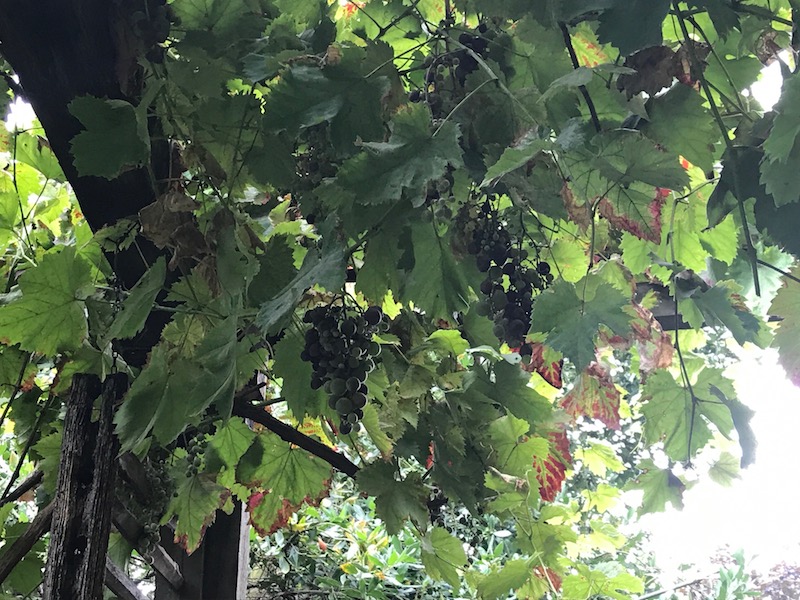

Back inside for the 2nd floor, where there were a few other rooms with fireplaces and the kitchen. The ceilings here had a nicer ceiling, which is what I would expect. Remember that while now, the ground floor has rooms, when this was actually in use, the ground floor would have been for stores or workshops and not living areas. I also grabbed pictures of the stained glass windows, which you can see much better in these pictures from the inside. They really are nice, and it sounded like they were original but have been somewhat restored.



The main fireplace here is really amazing, and huge. Above the fireplace, and around the edges, are various frescos.
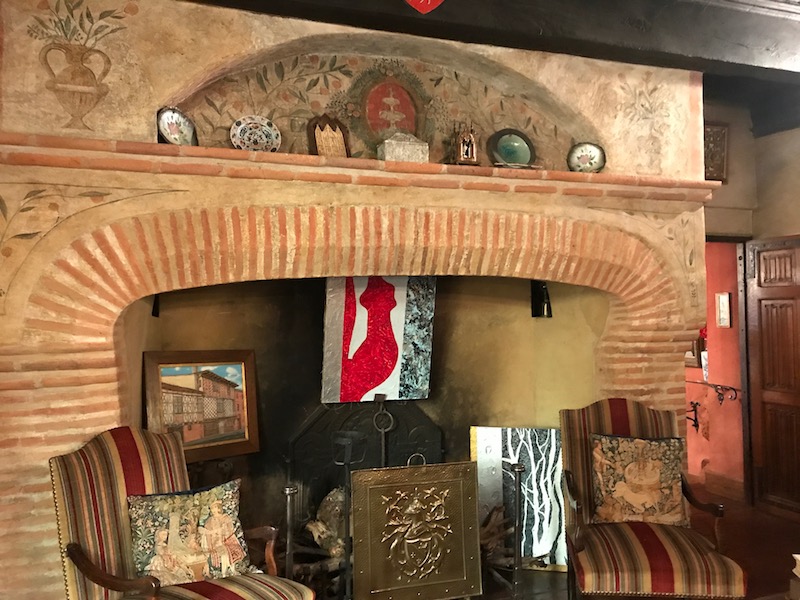
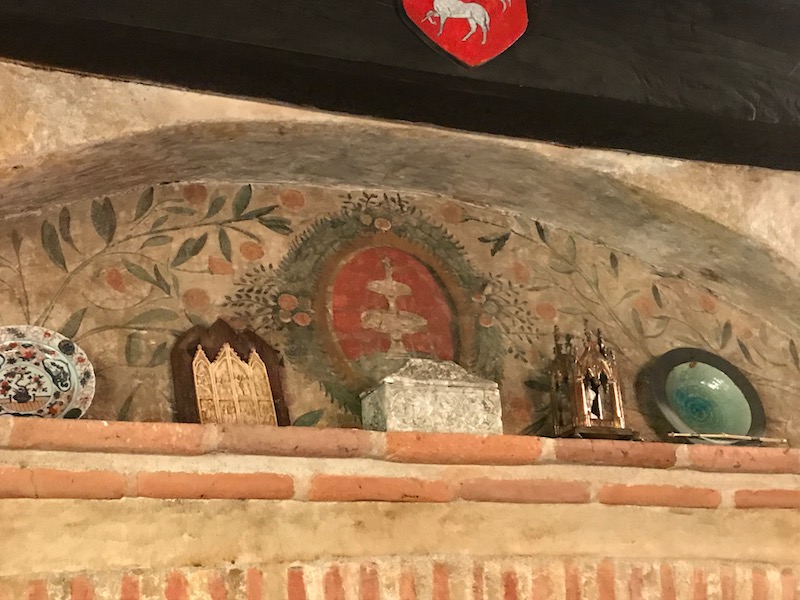


These are pictures taken of the church across the street, from the top floor bedrooms. It sounded like the rooms could be rented out, like a B&B, which would be a bit interesting. As the tour ended, we sat out on one of the balconies overlooking the garden and they served an aperitif (Kirs with blueberry syrup) and some home-made biscotti. We sat there with another couple (French) and the owners (also French) and talked for probably 20 minutes about various things ... about the house, the town, things about the area around Nantes (which is where the other couple was from), why we decided to retire in France and Toulouse (that is a common question), and a set of other things. We understood a set of things, although some of the conversation just passed us by. But all in all, it was well worth the 10 euros for the tour, drinks, and conversation.


